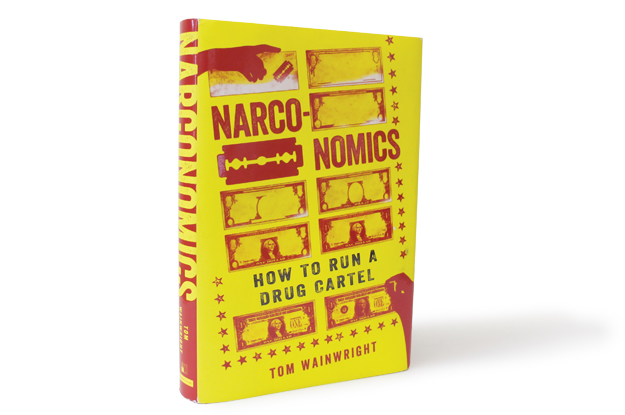With El Chapo behind bars and America’s legal-weed revolution underway, Tom Wainwright’s Narconomics: How to Run a Drug Cartel could not have come at a more pertinent time. Delving into “what big business taught the drug lords,” The Economist’s former Mexico City correspondent offers some needed context to the regionwide debate over drug policy.
Full of insightful analysis and statistics, Wainwright shows why the billions spent on the war on drugs have barely made a dent in the $90 billion global market for cocaine. The consumption of cocaine is up, and the use of other drugs, from marijuana to heroin, is also increasing. Meanwhile, the violence fueled by narcotics trafficking continues to tear up one Latin American country after another.
Part of the reason, according to Wainwright, is that drug bosses have learned to run their organizations like multinational businesses. When faced with a government crackdown in one country, the cartels respond like corporations faced with tough regulatory regimes — by moving production to a “friendlier” one. Their latest stop? Central America, now a waypoint for 80 percent of the cocaine that arrives in the United States.
If only politicians could think like their business-oriented foes, Wainwright laments, they’d see that going after the start of the production chain is futile, especially when a kilo of cocaine can retail for more than $100,000.
The data is convincing, but readers won’t need a degree in economics to understand the logic behind the business, or why the mano dura approach has been ineffective. Wainright makes it easy to see what really concerns the drug bosses.
The truth is, the greatest threat to the cartels is competition: competition from the dark web, where drug sales can be both anonymous and efficient; competition from the four U.S. states that have legalized recreational marijuana so far (according to the Mexican Institute of Competitiveness, Mexican cartels could ultimately lose up to three-quarters of their business to legal buyers in states like Colorado and Washington); and competition, perhaps, from Big Tobacco, which is rumored to be interested in legal pot.
In response, the cartels are diversifying. Wainwright explains how drug-trafficking organizations have taken over the networks that smuggle migrants across the U.S.-Mexico border. The cartels have the muscle and connections to help desperate individuals make the journey — and they charge accordingly.
Reading about this and some other gory aspects of cartel economics can be frustrating. Wainwright shows how addressing demand would diminish the illegal market on two fronts: consumption and prices. But targeting supply, as the U.S. and others do now, only leads to higher prices for drugs, lining the cartels’ pockets.
As I read, I thought that a different business tactic might come in handy: marketing. What if, instead of trying to steer adolescents away from smoking pot through educational health campaigns, we told them about the human trafficking, poverty and violence that their joint produced? Would socially conscious hipsters get on board?
—
Gonzalez is a web and media associate at AS/COA. She covers the Caribbean and Southern Cone for AS/COA Online. Follow her on Twitter @El_iG.



